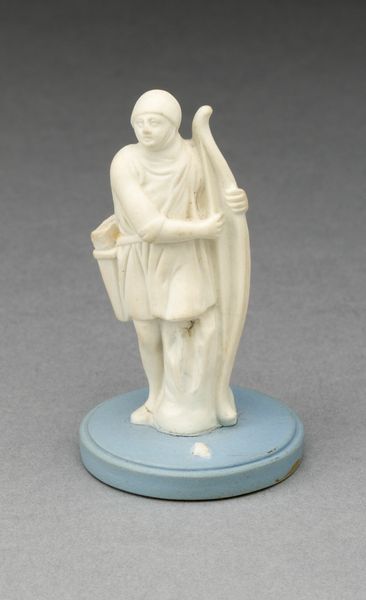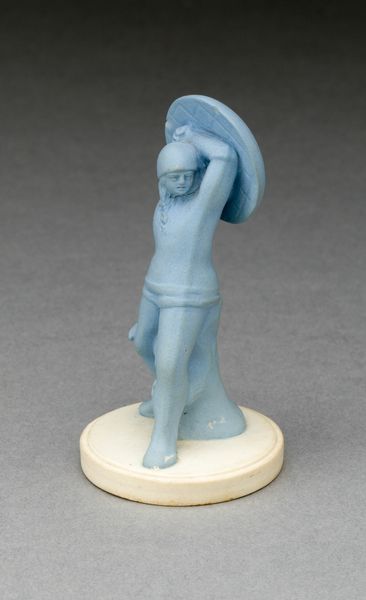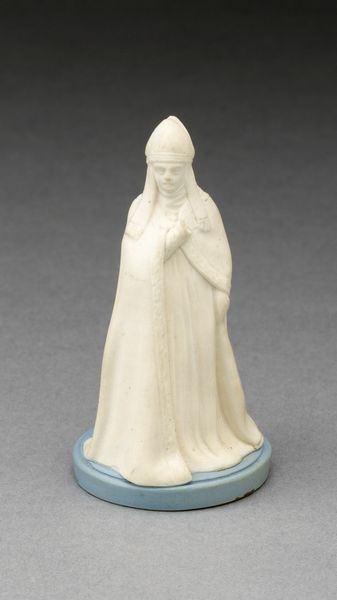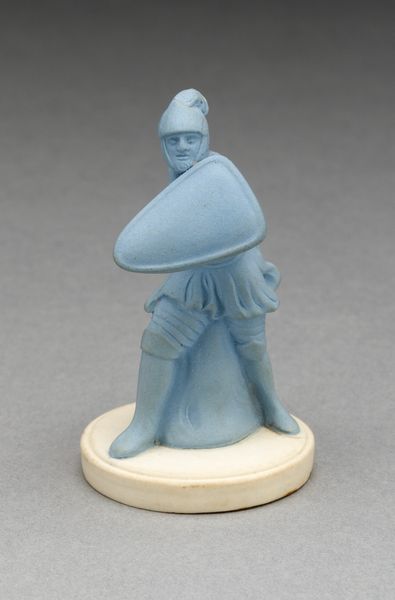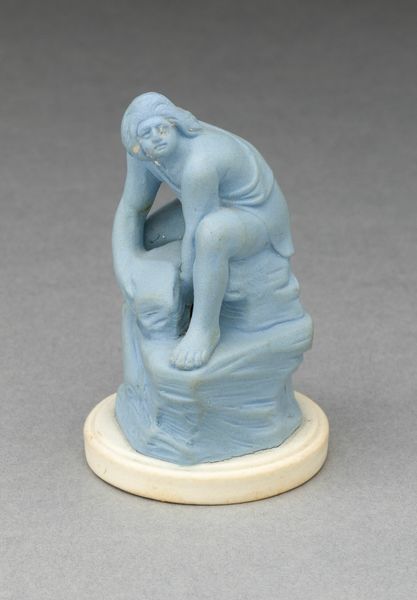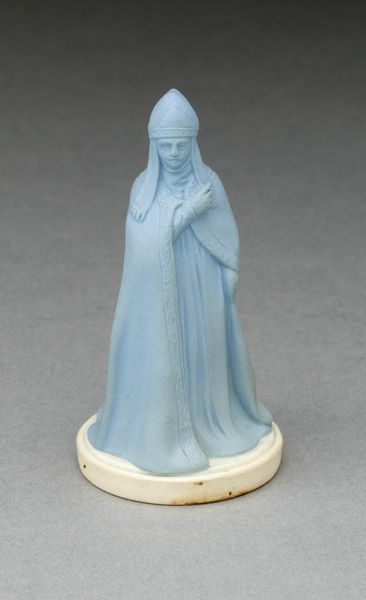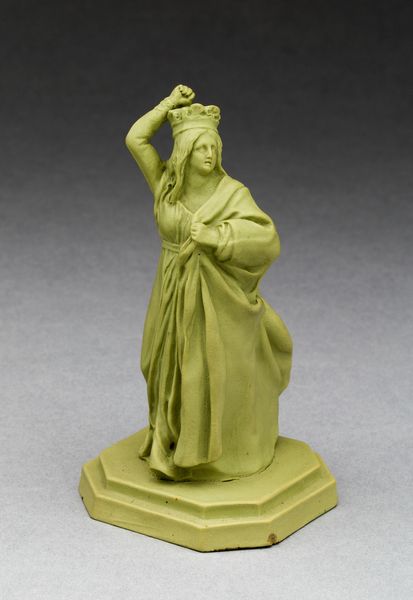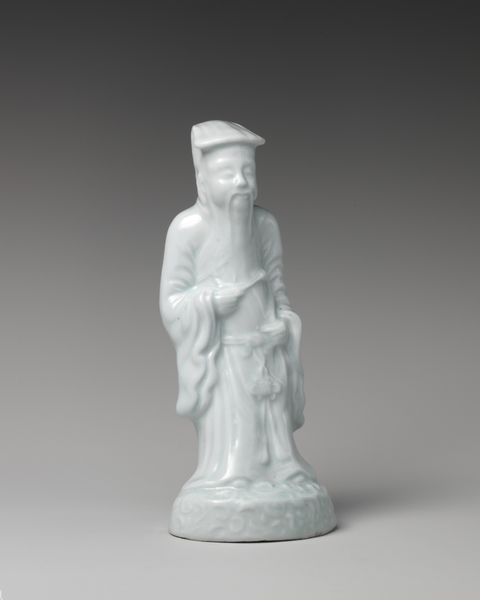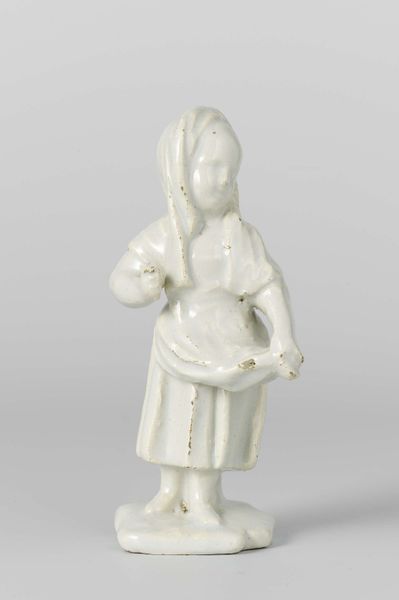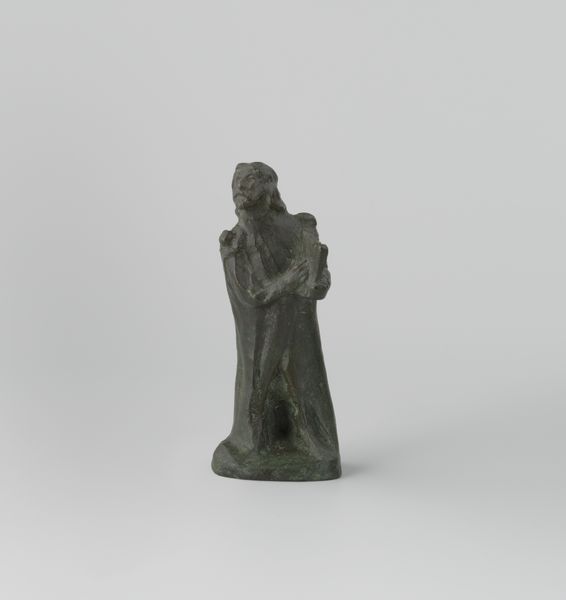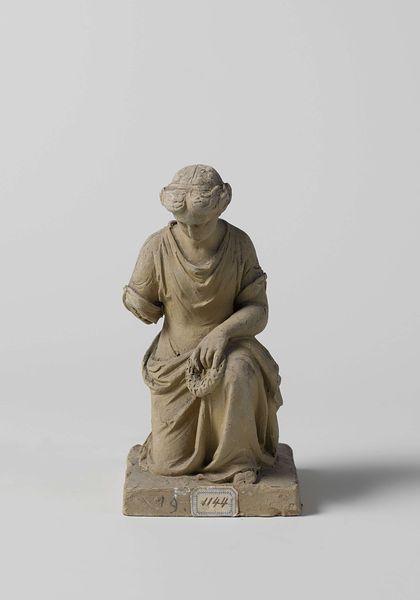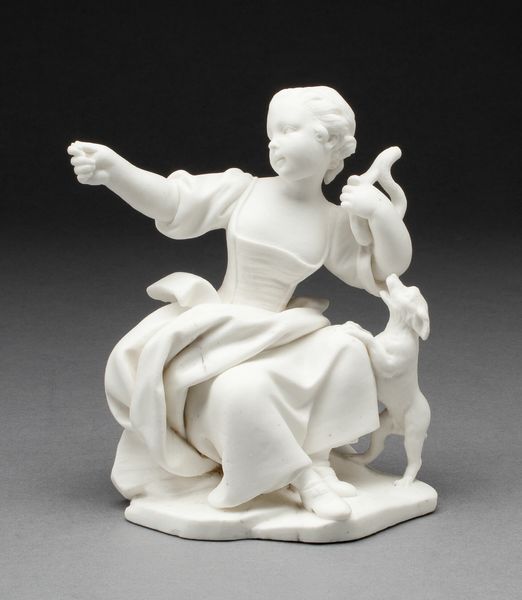
ceramic, sculpture
#
portrait
#
neoclassicism
#
ceramic
#
classical-realism
#
figuration
#
sculpture
#
decorative-art
Dimensions: 5.7 × 3.2 cm (2 1/4 × 1 1/4 in.)
Copyright: Public Domain
Curator: Oh, I quite like this "Chess Piece: Pawn" made by Wedgwood Manufactory around the 19th century. There’s a stillness to it that I find immediately calming. Editor: Calm? I see a soldier ready for deployment, but maybe the powder blue and cream coloration softens what would otherwise read as aggression and forward movement. Curator: Possibly. It feels like it transcends the role of pawn though, doesn’t it? Look at the way the figure clutches the bow – it is both a tool and shield. There's a quiet power here that contradicts the pawn's traditional weakness on the chess board. And Wedgwood specialized in neoclassicism with their ceramics, so there is this immediate read to historical romanticism that gets tangled up here, too. Editor: Definitely a romanticized figure. I read the archer, in his almost supplicant posture, as symbolic of a population being sacrificed for a powerful agenda. Consider how the strategic value of pawns has historically mirrored attitudes toward dispensable populations in war, imperialism, and labor. They are on the front lines absorbing most of the blows, without visibility. Curator: True, but Wedgwood pieces were typically designed for the elite, the chessboard an arena for the powerful…It’s like a curious reflection: an elite game memorializing a history of sacrifice. There's almost a hint of self-awareness within its delicate contours. Editor: It would be interesting to analyze for whom such decor pieces are purchased—as statement pieces or simple endorsements. Either way, in observing historical art pieces like these, one sees present and consistent political undercurrents around labor, body, identity, and access. The ceramic has a memory, too. Curator: Right—perhaps more a reminder than we originally bargained for! Well, either way, food for thought during the next chess match, yes? Editor: Exactly. Chess beyond the board—pieces moved across all power-driven and social structures.
Comments
No comments
Be the first to comment and join the conversation on the ultimate creative platform.
